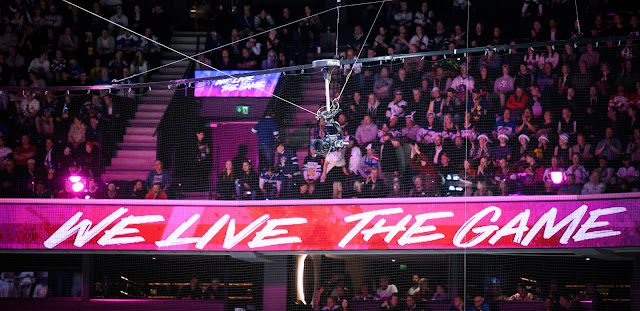Production innovation
As we catapult through the 21st century, it's clear that the sports broadcasting industry is not immune to the rapid pace of technological change. Live sports production has experienced significant shifts, heavily influenced by advancements such as remote production, 5G technology, special cameras and augmented reality (AR) graphics.
But what are some of the benefits, potential difficulties and general expectations from rightsholders? With experience at dozens of events each year, Infront Productions has seen every challenge and solution.
The shift to remote production
Remote production has surged in popularity in recent years, primarily because of two significant benefits. Firstly, it allows for the reduction of onsite resources, resulting in a more streamlined production process. Secondly, it facilitates the optimisation of resources at a central hub, improving efficiency and coordination.
However, like any technological shift, remote production is not without its challenges. Issues can arise with connectivity, latency, and reactivity. Despite these hurdles, the general expectations around remote production are positive, with potential cost savings and undeniable strides towards sustainability.
Recently, it has been used in the EHF European League. As you can see below, there is absolutely no way of knowing where a match is produced from.
4G/5G technology: A game changer
The advent of 4G and 5G technology has been another game-changer for live sports production. It can replace traditional RF technology and even serve as a backup to traditional distribution technologies. The result? A more sustainable and cost-efficient broadcast delivered quickly.
Infront Productions was one of the first companies in Europe to test 5G contribution at the 2019 BMW BERLIN MARATHON paving the way for it to be used more widely.
There are challenges, though, such as the fact that a major part of the technical solution is outside the control of broadcasters, and there used to be concerns around the quality of pictures depending on the available bandwidth. But in reality the technology has proven itself to be very reliable and is expected to deliver true cost savings and sustainability benefits to the industry. For example, since 2022, Infront Productions produces Run Rome The Marathon almost exclusively with 4G equipment including helicopter shots showing vast shots of the historic course.
The power of special cameras
Engaging fans is at the core of most rights holders values. They want their viewers to be right in the heart of the action. Improvements and innovations in special cameras – used intelligently and not just as a novelty – are one way to ensure that.
Features like racing drone and body cameras, are transforming the viewer's experience. They provide a more immersive experience for spectators and translate the excellence, craziness and skill of the athletes better to the viewer.
On the downside, budget constraints can limit the implementation of such technologies. Furthermore, local and sport-specific regulations can restrict their usage. Nonetheless, the incredible viewer experience provided by these cameras makes them an exciting addition to sports broadcasting.
The IIHF’s ref cam is one example of that. In a sport which prides itself on high speed, seeing the game from the point of view of the person in the middle adds a new dimension. It also allows fans to understand what the refs see in future games.
AR graphics: Changing the game
The integration of AR graphics into live sports production allows broadcasters to stand out against the competition. But more importantly it also provides the possibilities to better visualise information, making complex sports statistics and game insights more accessible and engaging for viewers.
Volleyball is a sport with a high number of data points and the positioning of players is vital to understanding the game. AR offers a new way to showcase that information in an easily digestible manner.
Despite the additional implementation and development effort and the budget associated, the dynamic and interactive element AR graphics add to sports broadcasting makes it a worthwhile investment.
Live sports production has come a long way, with remote production, 5G technology, special cameras, and AR graphics steering the transformation. While these advancements present their unique challenges, the benefits and potential they bring to the table are undeniable.
This Post first appeared on infront sport blog



.jpeg)
.jpeg)
